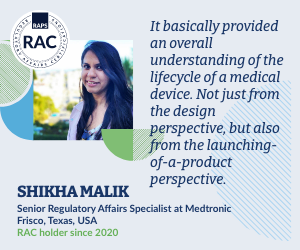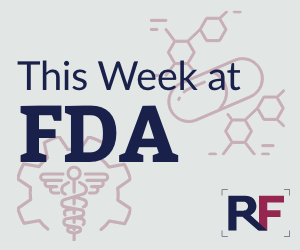Computational modeling and simulation: FDA outlines framework for assessing credibility
![]() Regulatory News | 04 January 2022 |
Regulatory News | 04 January 2022 |
With the use of computational modeling and simulation (CM&S) in medical device submissions on the rise, the US Food and Drug Administration (FDA) last month issued draft guidance detailing a risk-based framework for how to assess the credibility of such models.
Within the 36-page guidance, the agency lays out a nine-step generalized framework for assessing the credibility of computational modeling in a regulatory submission and provides additional details on the key concepts involved in the assessment.
While the guidance is based heavily on the FDA-recognized standard American Society of Mechanical Engineers (ASME) V&V 40 Assessing Credibility of Computational Modeling through Verification and Validation: Application to Medical Devices, the framework it provides is more general.
“ASME V&V 40 assumes the ability to perform traditional validation activities, that is, comparison of model predictions against well-controlled validated experiments. For computational models used in regulatory submissions, there are often many different sources of evidence that are available to support model credibility,” such as clinical studies, model calibration results and population-level validation results.
The guidance applies to computational modeling or simulations used to support premarket approval (PMA) applications, humanitarian device exemptions (HDEs), investigational device exemptions (IDEs), premarket notifications (510(k)s) and de novo requests. FDA writes that such models can be used “in a variety of ways,” including in silico device testing or “to influence algorithms within software embedded in a device.” Other applications include “in silico clinical trials,” in which CM&S methods are used to evaluate device performance using a virtual cohort to complement real world clinical trials, and CM&S-based qualified medical device development tools.
FDA says the guidance provides a “risk-based framework that can be used in the credibility assessment of computational modeling and simulation,” and is needed because “regulatory submissions often lack a clear rationale for why models can be considered credible for the context of use (COU).”
“In all cases, there is a need to demonstrate that the computational model is credible,” FDA writes. “Demonstrating model credibility involves various activities that include verification, validation, uncertainty quantification, applicability analysis, as well as adequacy assessment.”
The agency notes that the guidance specifically addresses first principles-based computational models, such as physics-based or mechanistic models, rather than statistical or data-driven models that would be used in machine learning or artificial intelligence models.
“This guidance is intended to help improve the consistency and transparency of the review of CM&S evidence, to increase confidence in the use of CM&S in regulatory submissions, and to facilitate improved interpretation of CM&S evidence submitted in regulatory submissions reviewed by FDA staff,” the agency writes.
FDA notes that the use of CM&S, or in silico methods, is “well-established and rapidly increasing” and can elucidate “important information not available from traditional in vivo or in vitro assessments” while streamlining development and reducing premarket burdens.
Guidance
Within the 36-page guidance, the agency lays out a nine-step generalized framework for assessing the credibility of computational modeling in a regulatory submission and provides additional details on the key concepts involved in the assessment.
While the guidance is based heavily on the FDA-recognized standard American Society of Mechanical Engineers (ASME) V&V 40 Assessing Credibility of Computational Modeling through Verification and Validation: Application to Medical Devices, the framework it provides is more general.
“ASME V&V 40 assumes the ability to perform traditional validation activities, that is, comparison of model predictions against well-controlled validated experiments. For computational models used in regulatory submissions, there are often many different sources of evidence that are available to support model credibility,” such as clinical studies, model calibration results and population-level validation results.
The guidance applies to computational modeling or simulations used to support premarket approval (PMA) applications, humanitarian device exemptions (HDEs), investigational device exemptions (IDEs), premarket notifications (510(k)s) and de novo requests. FDA writes that such models can be used “in a variety of ways,” including in silico device testing or “to influence algorithms within software embedded in a device.” Other applications include “in silico clinical trials,” in which CM&S methods are used to evaluate device performance using a virtual cohort to complement real world clinical trials, and CM&S-based qualified medical device development tools.
FDA says the guidance provides a “risk-based framework that can be used in the credibility assessment of computational modeling and simulation,” and is needed because “regulatory submissions often lack a clear rationale for why models can be considered credible for the context of use (COU).”
“In all cases, there is a need to demonstrate that the computational model is credible,” FDA writes. “Demonstrating model credibility involves various activities that include verification, validation, uncertainty quantification, applicability analysis, as well as adequacy assessment.”
The agency notes that the guidance specifically addresses first principles-based computational models, such as physics-based or mechanistic models, rather than statistical or data-driven models that would be used in machine learning or artificial intelligence models.
“This guidance is intended to help improve the consistency and transparency of the review of CM&S evidence, to increase confidence in the use of CM&S in regulatory submissions, and to facilitate improved interpretation of CM&S evidence submitted in regulatory submissions reviewed by FDA staff,” the agency writes.
FDA notes that the use of CM&S, or in silico methods, is “well-established and rapidly increasing” and can elucidate “important information not available from traditional in vivo or in vitro assessments” while streamlining development and reducing premarket burdens.
Guidance
© 2025 Regulatory Affairs Professionals Society.














